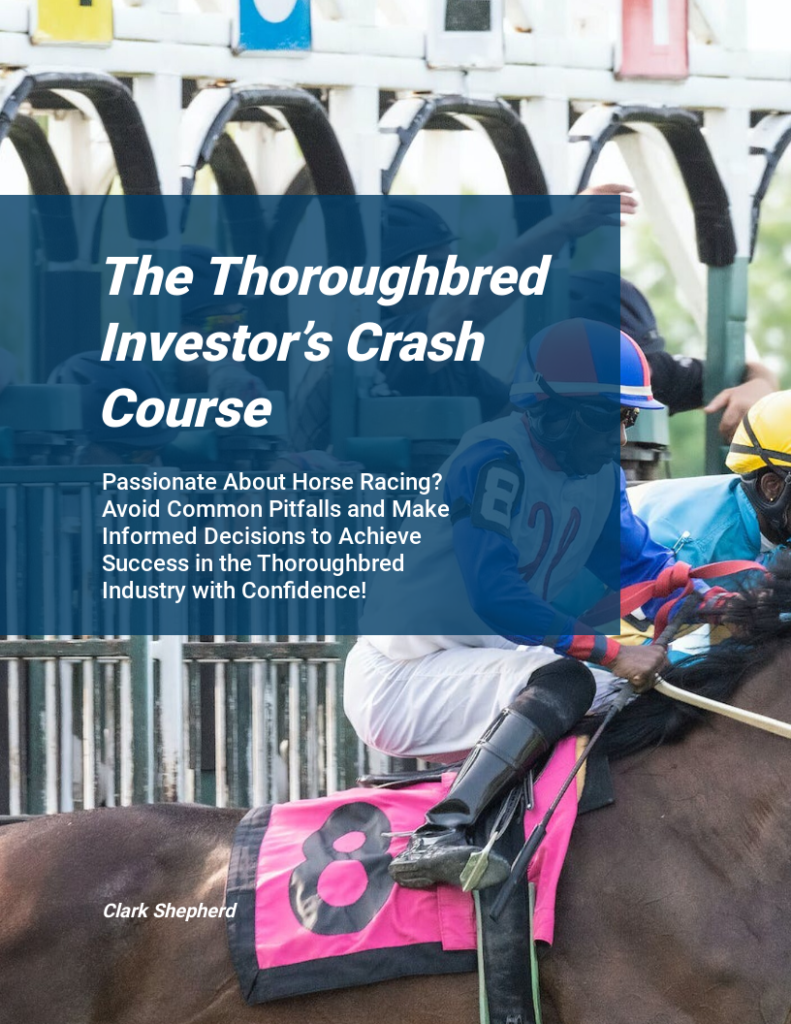Horse racing investments can be thrilling, but without a system to track your investments, it’s easy to make costly mistakes. The top bloodstock agents and horse racing experts have distilled the process into three golden rules: track everything, review regularly, and adjust your strategies based on data.
If you’re a new investor in the horse racing industry and want to improve your decision-making, follow these steps to gain control of your investments, make informed choices, and increase your chances of success.
1. Track Everything: The Data Never Lies
The foundation of successful investing is simple: keep detailed records. Every horse you invest in should come with a file containing everything from its purchase price to its training costs and race performance.
Let’s break it down:
- Purchase price: How much did you spend to acquire the horse?
- Training costs: Keep a log of monthly training expenses. It adds up fast.
- Race performance: Track not just the wins and losses, but how the horse performed under different conditions—track surface, weather, jockey, distance. Every detail counts.
For example, let’s say you bought a young thoroughbred for $50,000. In its first year, you spend ,000 on training, but it wins a few low-stakes races.
By having this data on hand, you can immediately see where your money is going and where the horse is generating value.
Here’s what to do next:
Start a digital spreadsheet (or even a simple notebook) where you record the specifics for each horse. Break it into clear sections: acquisition, training costs, race history, and performance notes.
The key here is consistency—don’t leave out any small details. Over time, these records will give you a treasure trove of insights.
2. Review Regularly: Don’t Wait to Spot Problems
One mistake many new investors make is waiting until the end of the year to assess their performance. By then, it’s often too late to make meaningful adjustments.
Instead, you need to be reviewing after each major event or race.
Think about it like this: after each race, you’ve got new data on your horse’s performance. Did it perform better on turf than dirt? Was there a noticeable improvement after switching trainers?
These are insights you can use to adjust your strategy.
Let’s say your horse placed poorly in its last three races, all on synthetic tracks. But you notice it consistently performs better on turf.
You wouldn’t want to wait until the end of the season to realize this. By reviewing regularly, you can pivot earlier—saving time and money.
To get started:
After every race, sit down and update your tracking system with the horse’s performance. Ask yourself, “What worked? What didn’t? Was there an external factor (weather, jockey, track) that influenced the outcome?”
By doing this regularly, you’ll start to spot trends much faster.
3. Adjust Horse Racing Strategies: Pivot When Necessary
Let’s be blunt: sticking to a failing strategy is a fast track to failure. The best investors are not afraid to change course when something isn’t working.
And the beauty of having all that data is that it gives you the power to make smart adjustments.
For instance, if a horse is underperforming, you might need to consider changing its race schedule, swapping trainers, or even selling the horse. The data will guide your decisions.
If you see a pattern that suggests a horse doesn’t do well in long-distance races, stop entering it in those.
Here’s an example: Suppose you invested in a two-year-old filly, and after reviewing her performance data, you realize she struggles with races longer than a mile. Rather than pushing her into more of the same, adjust your strategy by entering her in shorter races, where her chances of success increase.
Here’s how to start:
Once you’ve collected and reviewed enough data, make small, calculated adjustments. For example, if training costs are escalating without a noticeable improvement in performance, you might decide to switch trainers.
Or if a horse consistently performs poorly on synthetic tracks, focus on entering races on turf or dirt.
The key is to let the data inform your decisions. Track, review, and pivot.
It’s not about reacting emotionally; it’s about making logical adjustments based on facts.
Templates for Horse Racing Success
To help you get started, here’s a simple template for tracking your horse racing investments:
Horse Investment Tracker
| Horse Name | Purchase Price | Training Costs (Monthly) | Last 5 Race Results | Best Performance Conditions (Track, Distance, Jockey) | Next Race Adjustments |
|---|---|---|---|---|---|
| [Horse A] | ,000 | ,500/month | 3rd, 1st, 5th, 2nd, 4th | Turf, 1 mile, Jockey A | Enter in turf race next |
This template gives you a clear snapshot of your horse’s current status and guides your next steps. By keeping this template updated, you’ll have a holistic view of your investment at a glance.
Conclusion: Mastering the Art of Horse Racing Investment Tracking
Tracking, reviewing, and adjusting are the three timeless principles that every successful horse racing investor follows. They may seem basic, but these steps are the cornerstone of making informed decisions and maximizing returns in the industry.
Don’t leave your investments to chance. By taking the time to track every detail, reviewing your horses’ performances regularly, and making smart adjustments based on the data, you’ll give yourself the best chance of success.
So, start today. Create your tracking system, commit to reviewing after each race, and never be afraid to pivot when the numbers tell you to.
If you follow these steps, you’ll be well on your way to becoming a savvy and successful racehorse investor.
Remember, it’s not just about watching races and hoping for a win. It’s about collecting data, learning from every experience, and adjusting your strategy to stay ahead in the game.
Now get out there and track those investments. Your future success depends on it!

Discover the essentials of thoroughbred investing in just 5 days!
This email course covers breeding basics, smart buying strategies & industry best practices.
Gain the knowledge & confidence to make informed decisions.
Sign up now & start today!
The Thoroughbred Investor’s Crash Course (thoroughbredinvestorguide.com)







Recent Comments